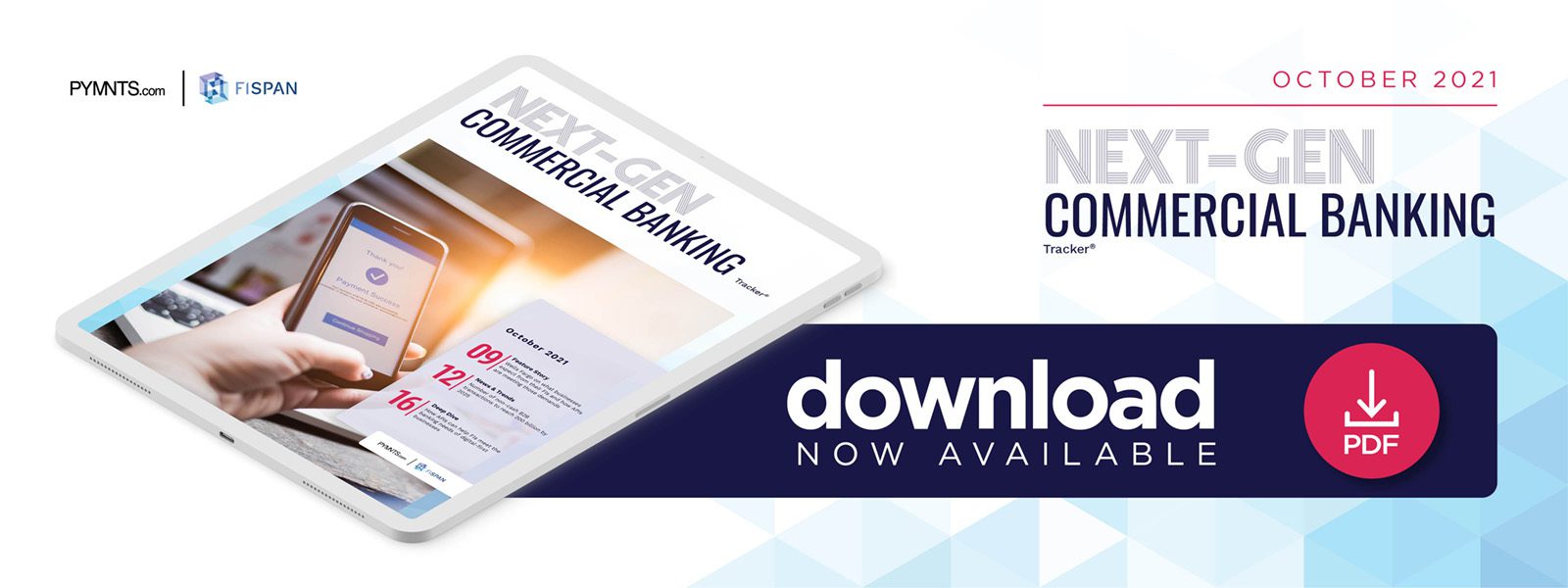Wells Fargo on Why APIs Are Key to Seamless, Streamlined Commercial Banking

Business decision-makers want the same level of personalization that has come to define consumer banking. In the inaugural Next-Gen Commercial Banking Tracker, Wells Fargo’s Reetika Grewal explains how APIs unify business data insights and payment capabilities while also supporting the consumerization of business banking needs.
The global shift to digital commerce that resulted from the pandemic has altered what many businesses are looking for in their relationships with financial services providers.
More and more companies are feeling the pressure to innovate traditional manual processes and payment flows, and this means seeking financial experiences that are more in line with state-of-the-art consumer banking than with historic corporate banking.
Digital channels and services have been present for years in the commercial banking space, but the global health crisis distinctly changed how companies are operating, according to Reetika Grewal, head of digital for commercial banking and corporate and investment banking at Wells Fargo.
“[Considering] the world of personalization that so many of us experience on the consumer side, businesses aren’t that different,” Grewal told PYMNTS in an interview. “They want experiences that are relevant to where they are in their life cycle, and [they expect] that we’ve already anticipated where they’re going to be.”
Meeting businesses where they are is critical for banks wishing to engage and retain their corporate clients’ loyalty. Banks must craft products that not only help firms digitize their processes but also integrate seamlessly with companies’ existing enterprise resource planning (ERP) systems to provide the transparency and clarity businesses crave. This is where technologies such as application programming interfaces (APIs) can offer tangible benefits.
APIs and Next-Gen Commercial Banking
Corporate banking in the pandemic era requires banks to understand that clients may differ vastly in their progress on their digital journeys. Many companies have been using the same tools — including paper-based payment methods, such as checks, paper invoices and ERP systems — to manage their needs for years, and this can make the first step to digitization both confusing and challenging.
“If you’re connecting directly into an API, that’s a technology engagement project,” Grewal explained. “Not everyone is ready … to take on a technology engagement project to connect up their system in that way.”
Wells Fargo creates company personas to understand businesses’ individual needs — an essential measure that allows the bank to carefully tailor its approach when integrating its API suites with companies’ ERP systems. The financial institution (FI) “preconfigures” these integrations to pave the way for businesses, Grewal said, working with industry partners to enable companies to connect easily to APIs. Removing that technology build or innovation project barrier on the businesses’ side is a crucial step in convincing them to digitize their B2B or other banking processes.
“[Our approach means] the company doesn’t have to do the heavy lifting of integrating into APIs,” she explained. “They have an ERP they use for the day-in, day-out running of their business. We come in and connect those APIs to it just to make sure they’ve got that full, end-to-end view and can help drive that automation … so they can reconcile it with the things they’re tracking in their ERP system.”
Ensuring that businesses can integrate easily with and use banks’ APIs and the financial tools that rest on them is becoming table stakes as companies seek greater transparency and convenience from their commercial banking experiences. This connectivity is especially critical for companies looking to set up services in new markets or expand their customer bases — moves that require increasingly swift and seamless banking tools.
APIs’ Growing Tole in the Global Economy
Companies’ business banking needs will continue to shift over the next several years, but Grewal said she expects these changes to revolve around simplifying experiences. Businesses will seek to further streamline their processes, opening the way for emerging tools such as APIs, automation and distributed ledger technology (DLT) to play a more dominant role in commercial banking. This is especially likely as business becomes more global.
“As companies move at a much more rapid pace from domestic-only to global, do we have the right tools for them to do that?” Grewal said. “So that’s another trend that we’re thinking about: How do we make sure that we’re able to, even at the earliest stages, support [companies] globally?”
Commercial financial institutions (FIs) wishing to remain competitive will want to keep an eye on the international stage, on which swift connectivity in B2B processes is becoming vital. Banks will need to adjust their corporate banking strategies and customer approaches accordingly to keep pace.

